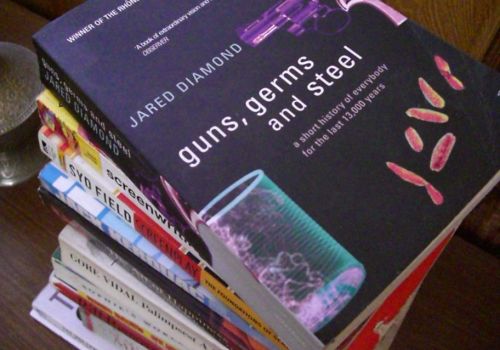-

This book caused quite a stir a few years ago (actually it’s already 13 years), and people and commentators world wide loved to talk about it. Guns, germs and steel is a very ambitious piece that seeks to boil world history down to a few, hard baseline facts. The author, a scientist, argues that people are equally smart, talented and entrepreneurial everywhere on the planet. What has led to certain parts, i.e Eurasia, gaining prominence over others are a few basic factors: guns, germs and steel.
It is a pretty dense read – sometimes it feels like tackling a college textbook. When reading it, I felt that yeah, this guy is making a pretty solid case for what he’s arguing about. Now, a couple of weeks later, I can’t help but think that the author missed the whole point of human history.
People make history, history doesn’t make people.
If you’re in the market for a challenging but rewarding read, this would be a good pick-up. My main gripe about it is its weight. See, I carried the darn thing to the Annapurna Base Camp and back.
No related posts.
Related posts brought to you by Yet Another Related Posts Plugin.
This entry was posted on Wednesday, January 20th, 2010 at 1:39 am and is filed under Notes From the Road. You can follow any responses to this entry through the RSS 2.0 feed. You can leave a response, or trackback from your own site.
-
M Schwartz
-
M Schwartz














